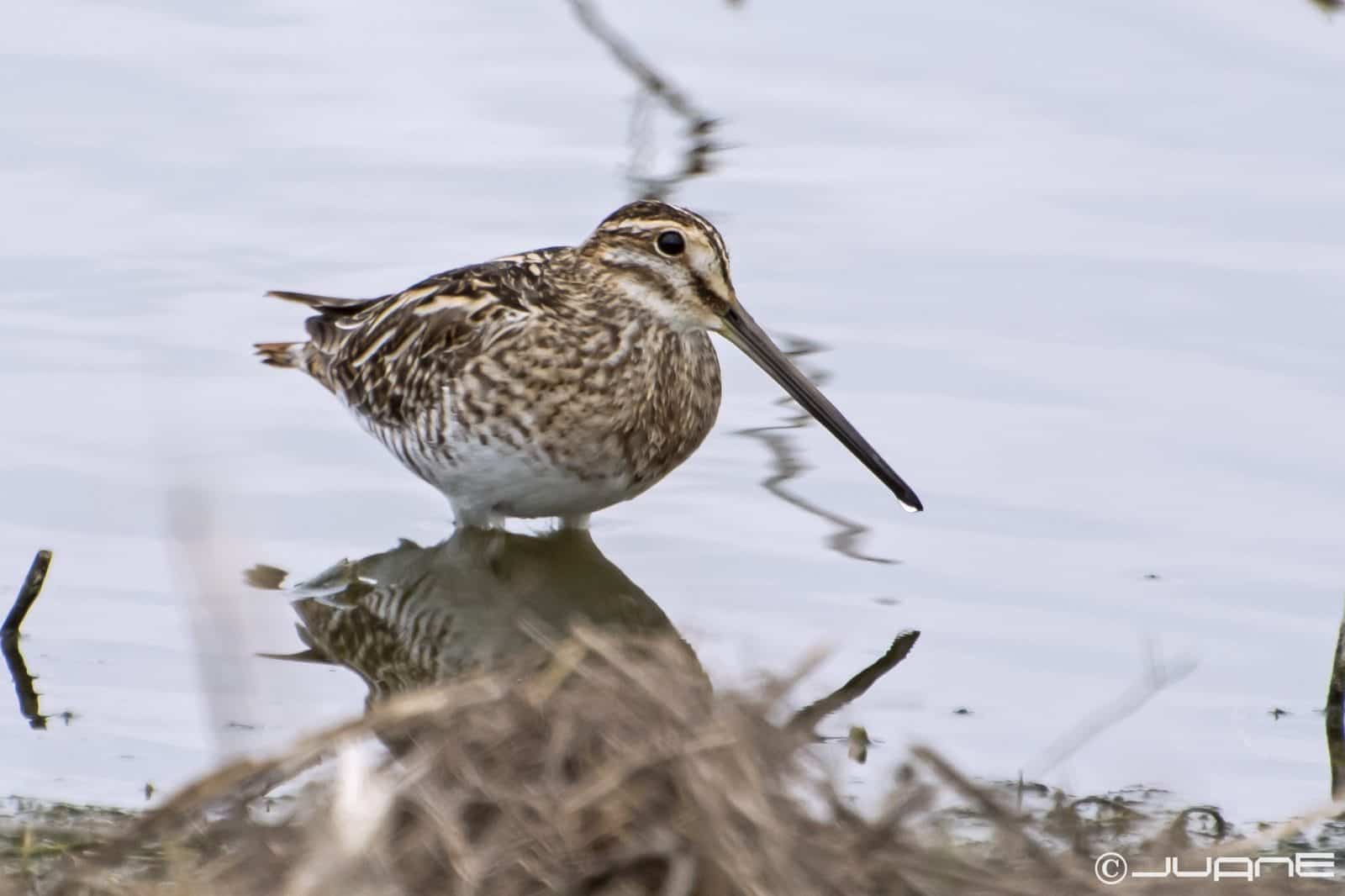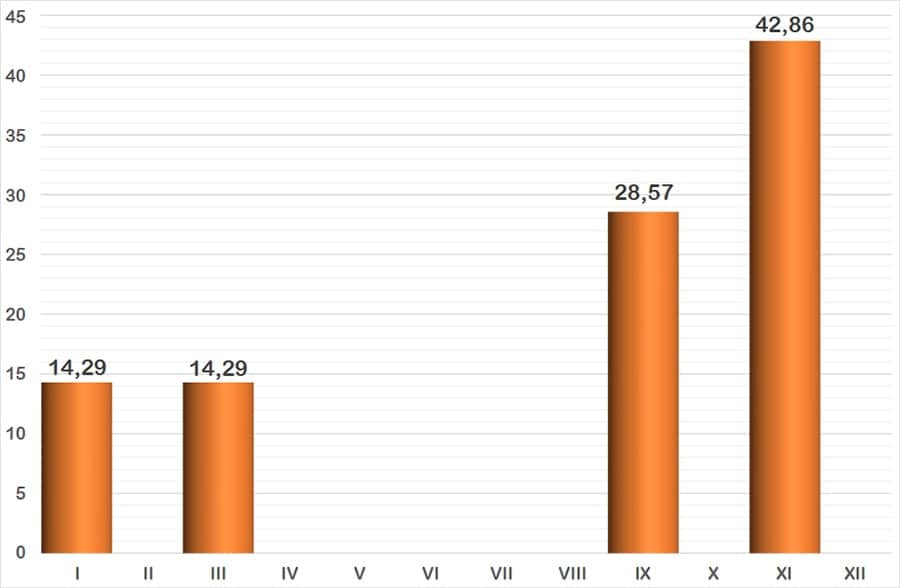This medium-sized wader is striking due to its enormous bill, almost twice the length of its head, which it uses in a characteristic way when searching for food by probing the mud, making very jerky, mechanical movements. When perched, it gives the appearance of a plump bird, takes off suddenly, emitting a snapping sound and flying in a zigzag pattern. The pattern of its plumage, heavily mottled in ochraceous brown, with a cream-coloured longitudinal stripe, allows it to pass easily unnoticed. The tail has no white edge to it.

La imagen es autoría de Juan Emilio. Licencia Creative Commons con algunos derechos reservados.
Species 1
Common Snipe
Scientific name
Family 2
Taxonomic Affinity Group 3
Phenology 4
The elusiveness of its character makes it difficult to detect, on the Iberian Peninsula it is a resident bird, in Roquetas de Mar it is spotted mainly in winter and in both migratory passages. As can be seen in the graph, the best months are October (postnuptial migratory passage) and especially November when sightings are most probable. In January and March (prenuptial migratory passage) there are fewer encounters.

The graph represents the probability of seeing a species during the year, grouped into months. The vertical axis indicates the percentage value. Each of the bars expresses its value. The horizontal axis represents the months: I = January, II = February, III = March, IV = April, V = May, VI = June, VII = July, VIII = August, IX = September, X = October, XI = November and XII = December.
Observation recommendations
It is a challenge to watch due to its requirement for a certain wading depth. Its reserved character means that great attention must be paid to the areas where the vegetation meets the water.
Observation areas where we can find it
Notes
[1] The names used are from the list of birds of Spain, drawn up by SEO/BirdLife and updated to 2019 (https://seo.org/listaavesdeespana/). The reference is: Rouco, M., Copete, J. L., De Juana, E., Gil-Velasco, M., Lorenzo, J. A., Martín, M., Milá, B., Molina, B. & Santos, D. M. 2019. Checklist of the birds of Spain. 2019 edition. SEO/BirdLife. Madrid.
[2] The taxonomic family to which it belongs is indicated.
[3] Traditionally, waterbirds have been grouped according to their taxonomy or “taxonomic affinity”, i.e., when some birds coincide in certain features that allow them to be classified scientifically, but without leaving the rigour of science, they are put together in these groups so that they can be easily recognised. These groups are the following: Greves (belonging to the Podicipedae family), Herons and Similar (includes the families: Ardeidae -Herons- Ciconiidae -Storks- and Threskiornithidae -Ibises and spoonbills-), Ducks (the whole Anatidae family), Coots and Similar (the family Rallidae corresponding to Rails, Gallinules and Coots), Cranes (also with only one family, the Gruidae), Waders , a heterogeneous group, the most diverse of this classification, includes the families Burhinidae (Stone-curlews), Haematopodidae (Oystercather), Recurvirostridade (Avocets and Stilts), Glareolidae (Pranticole), Charadriidadea (Plovers), Scolapacidae and finally Gulls and Similar (the recently unified family Laridae, i.e. Gulls and Terns).
[4] Phenology studies the relationship between the cycles of living beings and meteorological factors, and in our latitude these factors manifest themselves as variations throughout the year, thus relating the seasons to the birds’ cycles (breeding, migratory journeys, etc.) The graph shows the probability of seeing a bird depending on the month. It uses data from 48 bird censuses carried out between October 2016 and September 2018. The method used is that of a census route with sampling stations, with a total count on the sheet of water.
